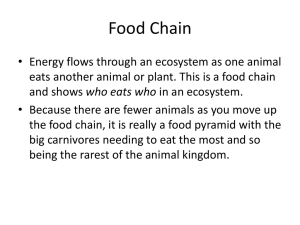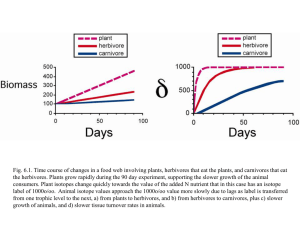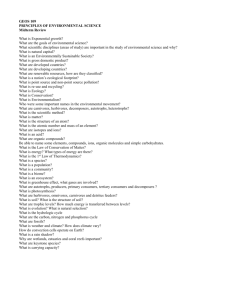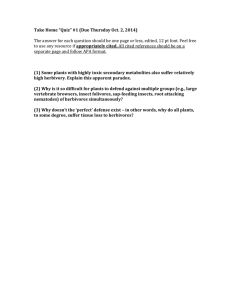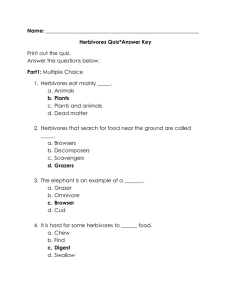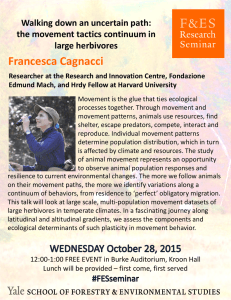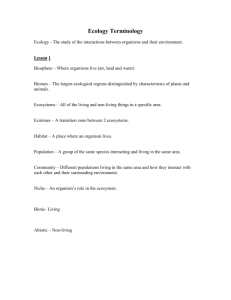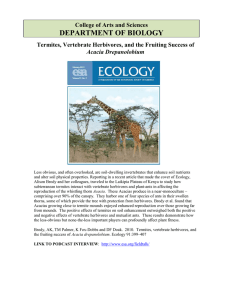Marine vs. Terrestrial Physical/Chemical: 1. Greater Density -
advertisement
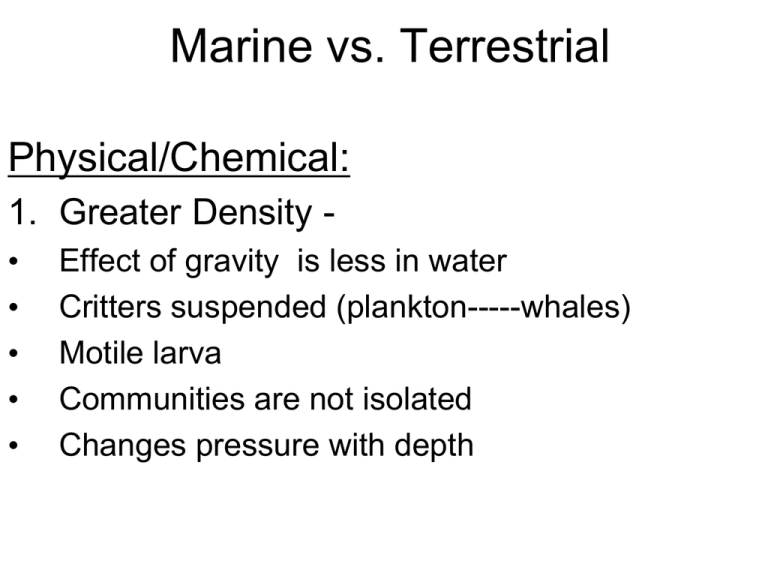
Marine vs. Terrestrial Physical/Chemical: 1. Greater Density • • • • • Effect of gravity is less in water Critters suspended (plankton-----whales) Motile larva Communities are not isolated Changes pressure with depth 2. Energy • • Carbohydrates - terrestrial Protein - marine 3. Water absorbs more light • • • Narrow zone for photosynthesis (200 - 400m) Photic zone Wavelengths drop out with depth 4. Sound is transmitted better • • Sound travels farther which is more useful to animals 20 degrees C in air = 346 m/sec in H20 = 1518 m/sec 5. High electrical resistivity • Means some animals can detect others electrical activity 6. Sea water has DOM 7. Oxygen air = 21% H2O = less and concentration varies with temperature and salinity • Organisms change to increase Oxygen absorption i.e. Increase surface area to volume ratio in respiration surfaces Life History Differences: 1. Gametes dispersed in H2O ---- external fertilization 2. No pollinators 3. Less parental care Structural/ Functional 1. No large plants in ocean 2. Dominant herbivores in ocean are small (copepods) 3. In ocean herbivores eat entire “plant” protists 4. In the sea animals (coral, mussels,& clams) live longer than plants (protists) 5. In sea most large animals are carnivores. Land: Large animals herbivores From the sea we eat salmon and tuna (carnivores) From land we eat cows (herbivores, first order consumers) 6. In sea trophic levels are blurred. Filter feeders eating (phytoplankton, zooplankton, and copepods/eggs).
